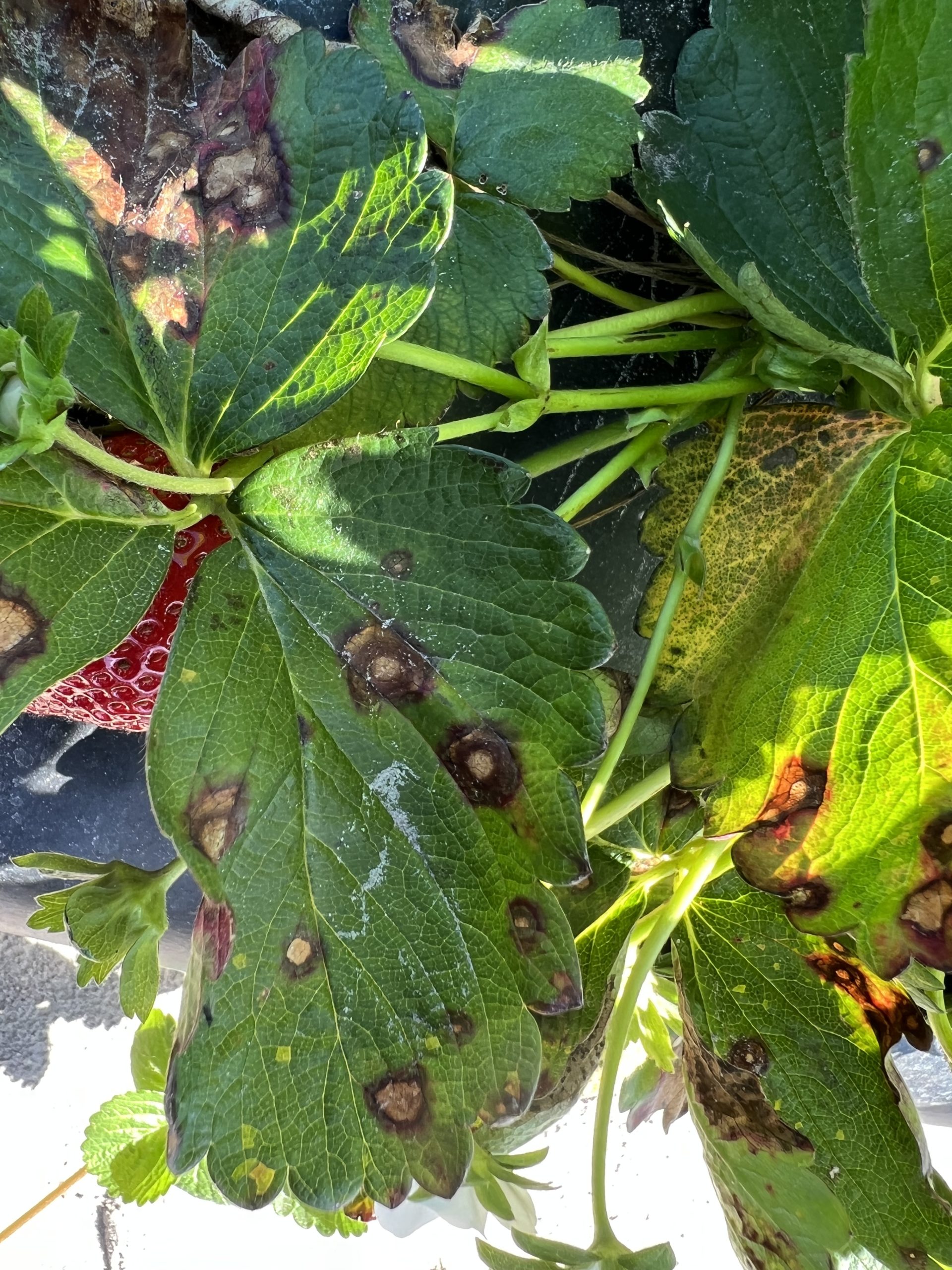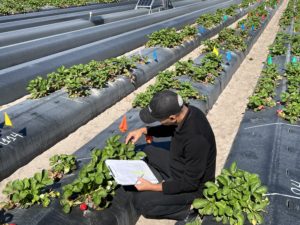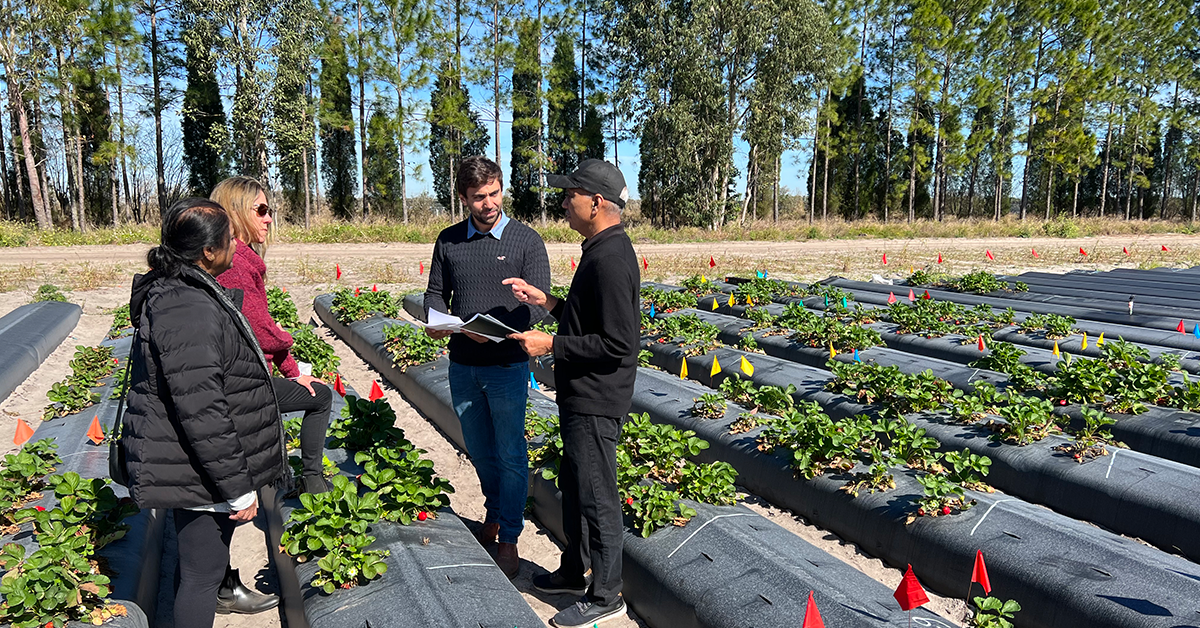Ahh lovely, luscious strawberries—if only we could control fungal diseases and nematodes.
Challenging pests attacking strawberries and most other crops are the focus for our scientists who work with experts and innovative researchers across many disciplines. Many novel compounds are being evaluated for control of pests and diseases that can severely impact yields and quality of high value crops, especially strawberries.

During the 2018–19 and 2019–20 strawberry seasons, an outbreak of Pestalotia leaf spot disease (Neopestalotiopsis rosae) caused unprecedented damage to fields in Florida which severely affected the yield. Growers are increasingly concerned, as no fungicide is currently labeled for the control of this disease on strawberries in the United States or elsewhere. Damage from sting and root knot nematodes also poses threats to the crop while control of Botrytis fruit rot is a common challenge for producers.
In October 2021 Dr. Krishan Jindal began small plot field trials with new plant-based products to determine their potential for controlling these two critical fungal diseases and nematodes. His evaluations include a plant-based fungicide applied alone at two rates and integrated in rotational spray programs with commercial synthetic and biological fungicides.

Jindal reports that the combination of a plant-based product integrated into the rotational spray programs with synthetic fungicide is showing significantly lower incidence of Pestalotia leaf spot compared to untreated check and other treatments. The novel mode of action of the plant-based product can help minimize development of resistant pathogens, extend the life of proven fungicidal chemistries while reducing the level of chemical residues.
The incidence of Botrytis in the test fields is being monitored as applications of fungicides just began in late January. These results will be determined as the crop nears harvest.
Another plant extract product with a novel mode of action is being tested for control of sting and root-knot nematodes in strawberries. Jindal is working with nematologists at the University of Florida in Wimauma to determine responses to several different nematicide treatments. When rating the plants for vigor, the plots treated with fumigant had the best growth followed by a combination treatment of the plant extract nematicide with a synthetic nematicide. Initial observations indicate this combination of products improved plant growth over untreated check plots.
The final analysis of the control offered by these new plant-based products will be generated as the strawberry crop matures. Stay tuned for more about the potential fungicidal and nematocidal effects of plant extract technologies as AgriThority scientists compile and summarize field trial data for performance comparisons in strawberries and many other crops across the United States and around the globe.

Forward-thinking agriculture experts with deep scientific experience are the core of AgriThority®. As an independent global science consultancy, we focus on exploring potential, expanding market access and evolving production for greater food security and sustainability. When your Research is ready for Development, turn to AgriThority for scientific business, market and product expertise.


